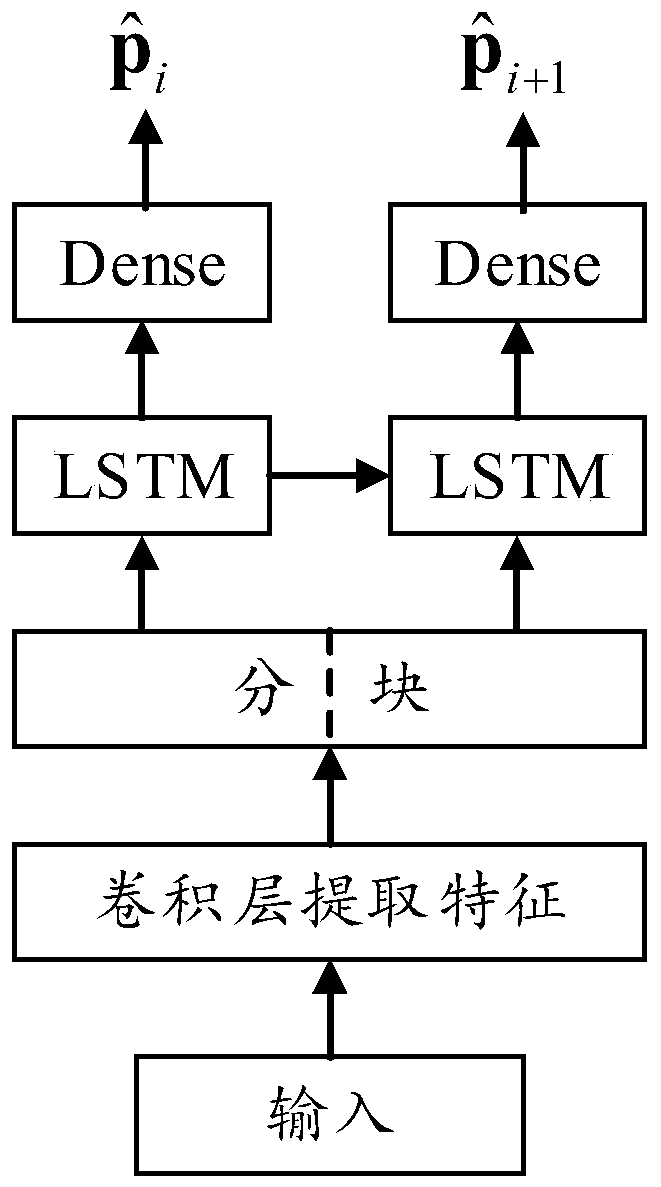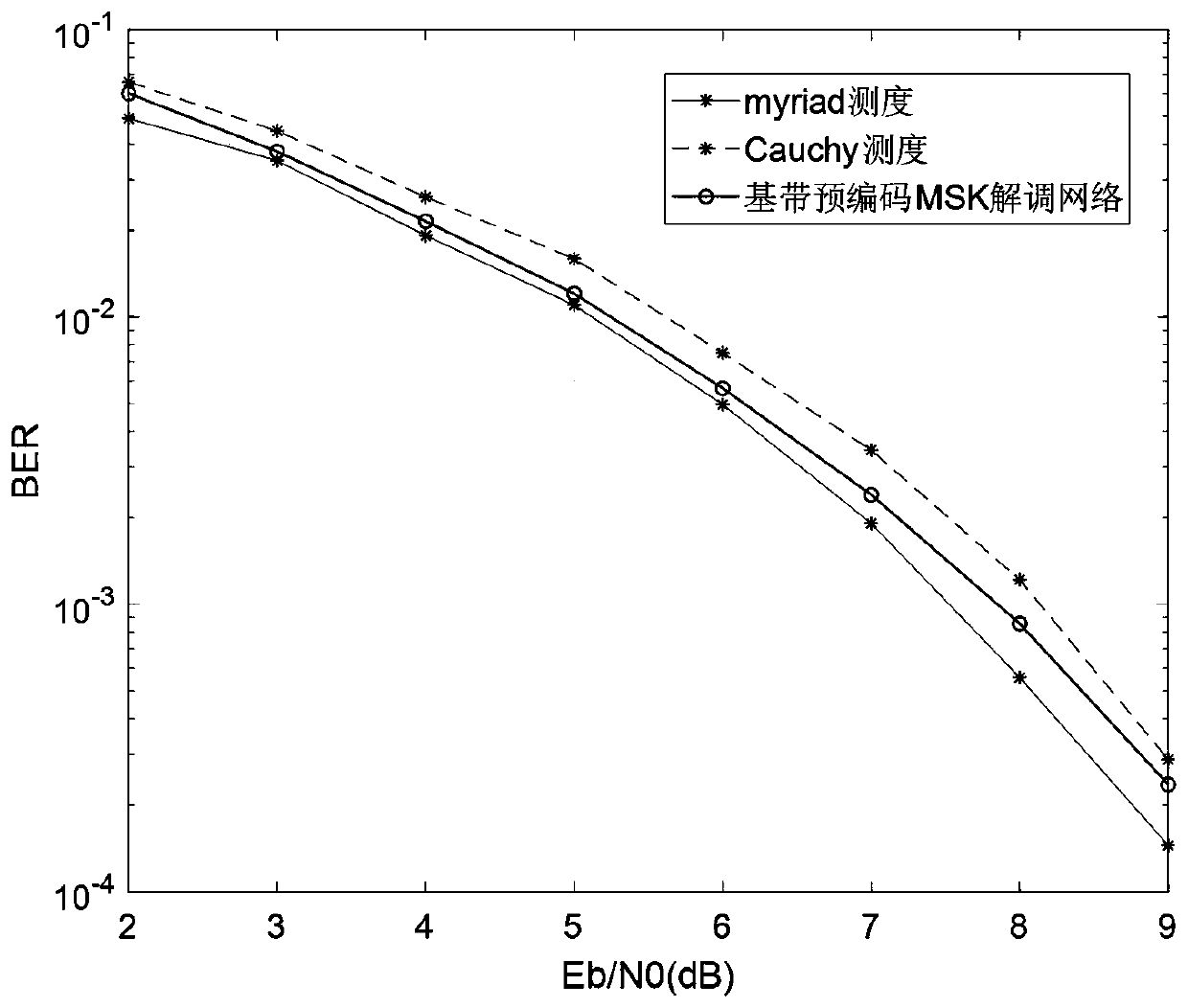Baseband precoding MSK signal demodulation method based on deep learning under pulse noise
A deep learning and impulse noise technology, applied in the field of communication, can solve problems such as difficulty in channel model parameter estimation, and achieve the effect of avoiding complexity and effectiveness problems
- Summary
- Abstract
- Description
- Claims
- Application Information
AI Technical Summary
Problems solved by technology
Method used
Image
Examples
Embodiment
[0029] In this embodiment, the parameters of the baseband precoded MSK signal are: the interval T of the information source transmitting bit information b =0.01s, every T b Number of sampling points N sample =32. The impulse noise model is the SαS model, the characteristic index α=1.5, the symmetry parameter β=0, the position parameter μ=0, and the scale parameter γ describe the strength of the impulse noise, which is used to define the signal-to-noise ratio SNR(dB)=P s / 2γ 2 , where P s is the signal power. The implementation steps are as follows:
[0030] Step 1: Preprocess the IQ two-way signal received by the receiving end, and the clipping threshold p threshold =20, every 128 sampling data is a data block.
[0031] Step 2: Construct the CLDNN demodulation network, the overall structure is as follows figure 1 shown. Under the condition of selecting impulse noise SαS(α=1.5) b / N 0 When =7dB, the preprocessed data of the received signal Q channel is used as a trai...
PUM
 Login to View More
Login to View More Abstract
Description
Claims
Application Information
 Login to View More
Login to View More - R&D
- Intellectual Property
- Life Sciences
- Materials
- Tech Scout
- Unparalleled Data Quality
- Higher Quality Content
- 60% Fewer Hallucinations
Browse by: Latest US Patents, China's latest patents, Technical Efficacy Thesaurus, Application Domain, Technology Topic, Popular Technical Reports.
© 2025 PatSnap. All rights reserved.Legal|Privacy policy|Modern Slavery Act Transparency Statement|Sitemap|About US| Contact US: help@patsnap.com



